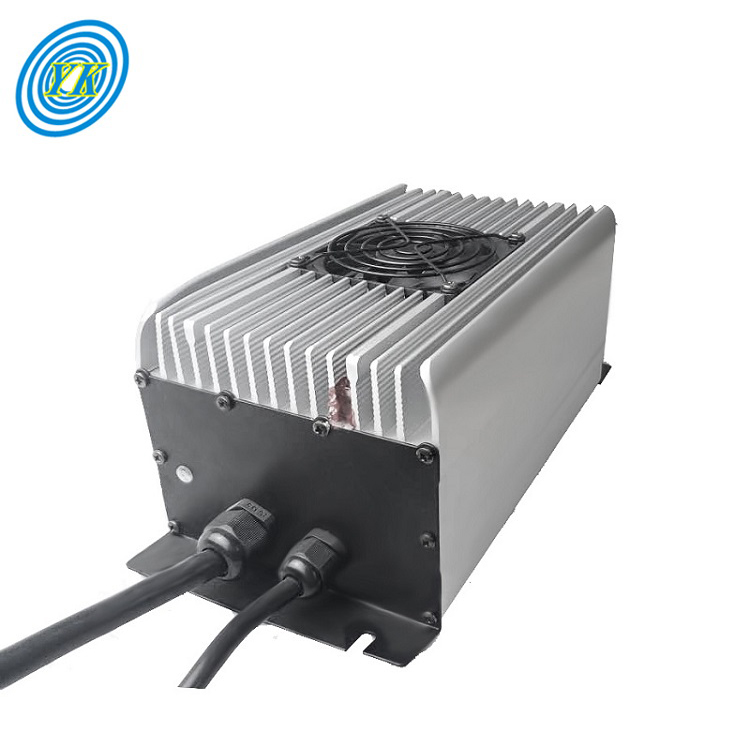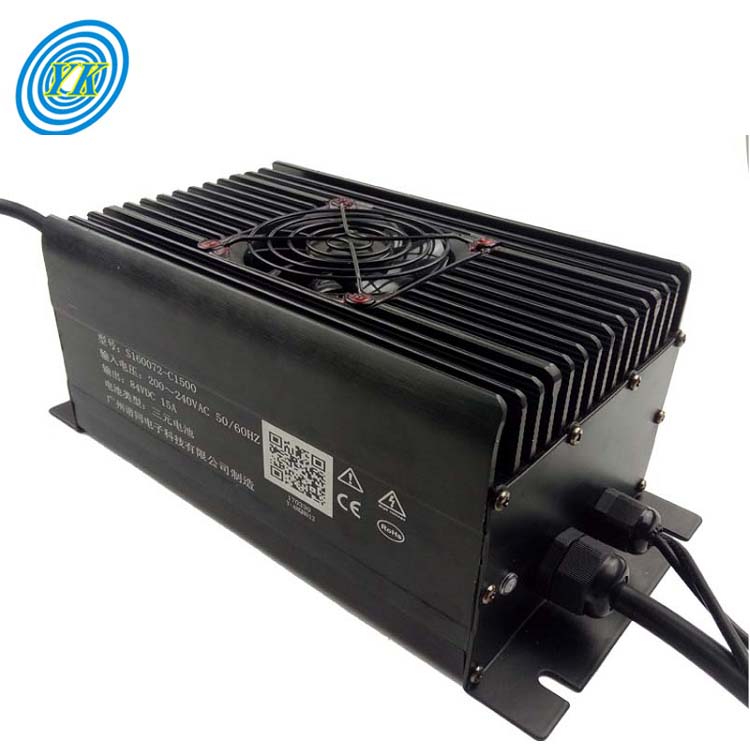News
Navigating the Evolution and Impact of Battery Charging Technologies in the Industrial Landscape
Click: 972 Date: 01/30/2024 2::56::14 PM
Navigating the Evolution and Impact of Battery Charging Technologies in the Industrial Landscape
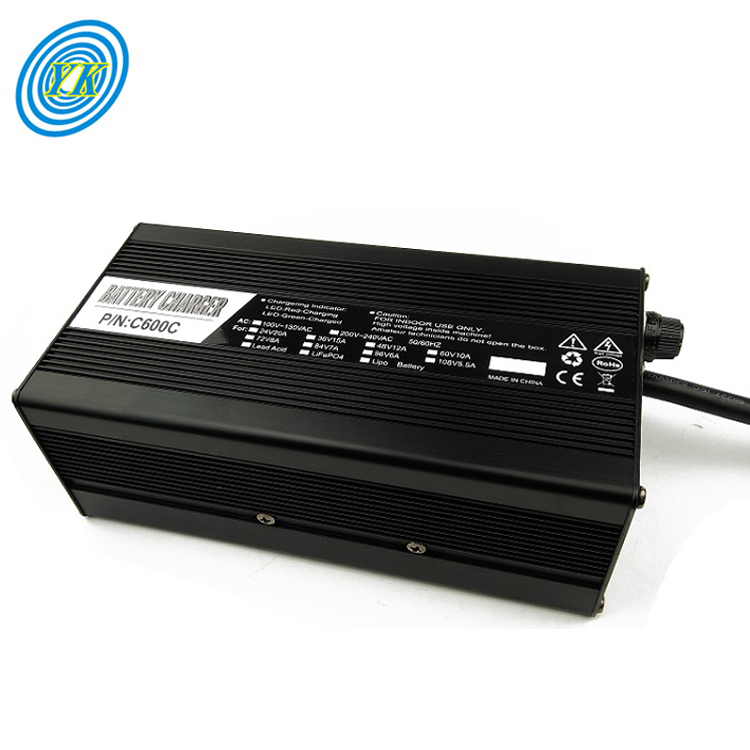
Understanding the Role of Battery Chargers in Industrial Applications
Battery chargers play a pivotal role in the industrial sector, providing the energy required to power a variety of machinery and equipment. They are designed to deliver power efficiently and effectively, ensuring optimal operation of industrial processes.
The core function of a battery charger is to infuse energy into a rechargeable battery by driving an electric current through it. This process is vital in industries where continuous operation is required, such as manufacturing plants and transportation systems.
There are several key parameters that influence the performance of a battery charger. These include voltage, current, and charge control. The voltage must align with the battery’s voltage to avoid causing damage. A higher current leads to faster charging, but it can also lead to overheating. Charge control helps to prevent overcharging, which can extend the lifespan of the battery.
Choosing the right battery charger for industrial applications requires careful consideration. Factors such as the type of battery being charged, the desired charging speed, and the charger’s compatibility with the battery should be taken into account. Additional features such as charge control and conditioning can be beneficial, especially for prolonging the lifespan of batteries.
In the industrial setting, battery chargers often come with advanced features and technologies to ensure efficient and reliable power delivery. For example, some chargers incorporate smart charging algorithms to optimize battery life and reduce maintenance costs. Others offer remote monitoring capabilities, allowing operators to track battery health and status remotely.
In conclusion, understanding the role of battery chargers in industrial applications is crucial for optimizing operational efficiency, extending battery life, and reducing maintenance costs. By choosing the right charger and utilizing its advanced features, businesses can significantly enhance their productivity and competitiveness in the industrial marketplace.
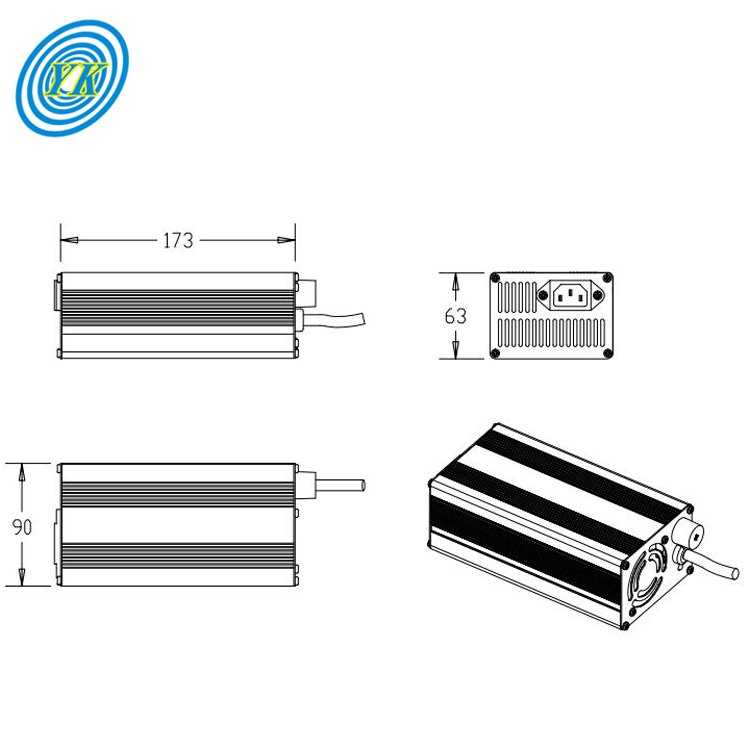
Battery chargers are fundamental components in today's technological landscape, playing a critical role in powering a multitude of devices ranging from laptops to electric vehicles. There are several types of battery chargers, each with unique characteristics and applications. This article delves into the intricacies of these different types, providing insights into their operation, benefits, and potential drawbacks.
Firstly, let's discuss the Trickle Charger. This type of charger operates by slowly infusing energy into a battery, thereby preventing overcharging. It's particularly beneficial for batteries with sensitive chemistries, where rapid charging can cause damage.
Next, we encounter the Fast Charger. As the name implies, these chargers are designed to recharge batteries quickly. However, they often come with built-in circuitry to safeguard against overcharging and overheating, which are potential issues with rapid charging.
The Inductive Charger is another fascinating category of battery chargers. These chargers utilize electromagnetic fields to transfer energy between two objects. Wireless phone chargers and electric toothbrush chargers are prime examples of inductive chargers. They offer convenience as they eliminate the need for physical contact between the charger and the device.
Lastly, the Solar Charger stands out due to its environmental friendliness. Solar chargers convert sunlight into electrical energy, which is then used to charge batteries. They offer an eco-conscious alternative to traditional charging methods, making them an appealing choice for those seeking sustainable energy solutions.
While exploring these types of battery chargers, it's crucial to consider certain key parameters that influence their performance. For instance, the voltage must match the battery's voltage to avoid potential damage. Additionally, the charger's current output, which determines how fast the battery charges, should be carefully managed to prevent overheating and overcharging.
In recent times, we have seen the rise of Smart Chargers. These advanced chargers not only recharge batteries but also offer functionalities like conditioning to prolong battery life. They are equipped with microprocessors that can adapt charging to the specific needs of the battery, thereby enhancing safety and efficiency.
In conclusion, understanding the different types of battery chargers is vital for optimizing their performance and ensuring their longevity. As technology continues to evolve, we can expect to see even more innovative solutions in the realm of battery charging.
Fast charging has emerged as a game changer in the battery industry, revolutionizing the way we power our devices and vehicles. This technology, which enables rapid recharging of batteries, is paving the way for more efficient and convenient use of renewable energy sources.
One of the significant advancements in fast charging technology is the development of new types of batteries capable of handling high charging speeds. For instance, a team at Cornell Engineering has created a lithium battery that can charge in under five minutes, significantly faster than any other battery on the market. This breakthrough has the potential to alleviate "range anxiety" among electric vehicle owners, making longer trips possible without extensive recharging times.
Another critical aspect of fast charging is managing the thermal challenges associated with high-speed charging. Extreme fast charging can generate substantial heat, which if not properly managed, can degrade the battery's performance and lifespan. Therefore, research is being conducted to develop effective thermal management strategies for fast charging batteries.
Moreover, the advent of fast charging has led to the exploration of innovative charging methods. For example, wireless induction charging on roadways can further increase the convenience of fast charging, reducing the need for bulky charging stations and making electric vehicles more accessible.
Despite these advancements, there are still challenges to overcome. One of them is the development of suitable materials for fast charging. For instance, while indium anodes offer promising results for fast charging, they are heavy, indicating a need for lighter alternatives.
In conclusion, fast charging is set to play a crucial role in the future of the battery industry. It is enabling the widespread adoption of electric vehicles and renewable energy sources, thereby contributing to environmental sustainability and energy efficiency. However, continued research and development are needed to address the remaining challenges and unlock the full potential of this transformative technology.
Battery technology continues to evolve, introducing new methods of charging that promise increased efficiency and speed. Two such innovative solutions are three-stage charging and induction-powered charging.
Three-stage charging is a process that divides the battery charging process into three stages: precharging, absorption, and float charging. This method allows for a more precise control over the charging process, leading to better performance and longer battery life. It also reduces the risk of damage to the battery, making it a safer choice for many applications.
On the other hand, induction-powered charging uses electromagnetic induction to create a magnetic field that induces electric currents in nearby conductive materials. This technology eliminates the need for physical contact between the charger and the battery, providing a clean and efficient way to charge batteries. However, the effectiveness of induction charging can be affected by environmental factors such as humidity and temperature, necessitating careful design considerations.
While both three-stage charging and induction-powered charging offer unique advantages, they also come with their own challenges. For instance, three-stage charging requires sophisticated control systems to manage the different stages of charging, while induction charging must overcome issues related to interference and power loss.
Despite these challenges, the potential benefits of these innovative charging methods make them worth exploring further. As battery technology continues to advance, we can expect to see more developments in this area, offering even more efficient and reliable ways to charge our electronic devices.
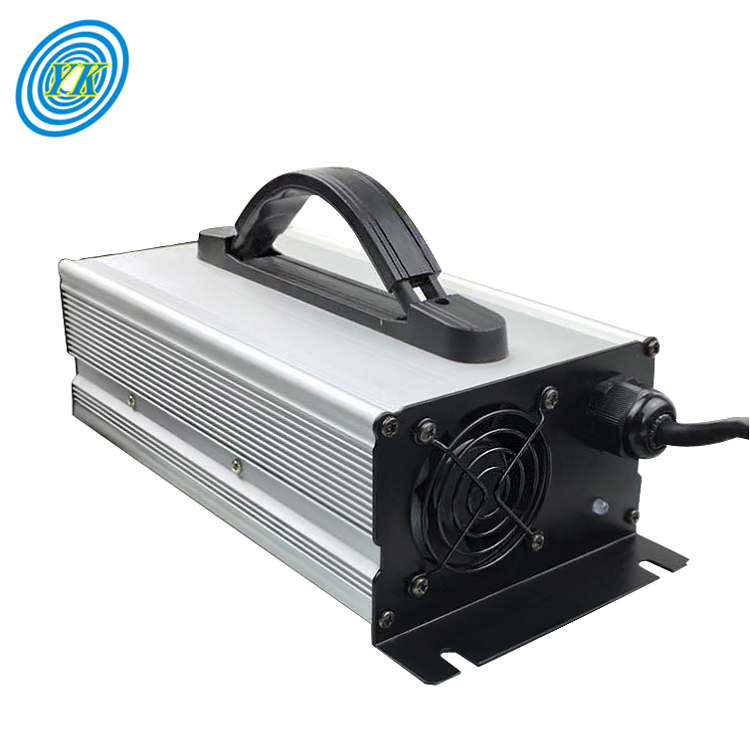
The Future of Battery Charging: From Sealed Lead Acid (SLA) Batteries to Lithium Batteries
The world of battery technology is constantly evolving, with advancements in technology leading to the development of new types of batteries. Two prominent types of batteries in the market today are Sealed Lead Acid (SLA) batteries and Lithium batteries. While SLA batteries have been a reliable choice for many years, the advent of Lithium batteries has brought about significant changes in the industry due to their superior performance characteristics.
Understanding the Differences Between SLA and Lithium Batteries
Firstly, let's understand the key differences between SLA and Lithium batteries. Although AGM (Absorbed Glass Mat) and flooded batteries are both considered SLA batteries, they are different. An AGM battery has a thin glass-mat separator that absorbs the electrolyte. Flooded batteries need to be topped off with water every six months to prevent sulfuric concentration increases in the electrolyte. AGM batteries provide better cycling performance and faster charging performance. They demonstrate minimal gassing and acid leakage, last longer, and are resistant to freezing.
On the other hand, Lithium batteries hold a higher voltage charge per cell, cannot handle voltage imbalances across cells, and if overcharged, have much more significant consequences than SLA batteries. Therefore, a Lithium battery requires a charger specific to a Lithium battery.
The Transition from SLA to Lithium Batteries
Despite the initial cost advantage of SLA batteries, the long-term benefits of Lithium batteries make them the preferred choice for many industries. Lithium batteries are cheaper over the long run and weigh less, which makes them more efficient. However, there are two main concerns associated with Lithium batteries: safety and compatibility issues with existing charging systems.
While Lithium batteries are generally perceived as safer, many users have experienced problems swapping out an SLA battery for a Lithium battery. It's crucial to note that a Lithium battery charger must be used to charge Lithium batteries; using an SLA battery charger can lead to serious complications, including damage to the battery and potential hazards.
The Future of Battery Charging
Looking forward, the future of battery charging is likely to be dominated by Lithium batteries. As technology continues to advance, we can expect to see even more improvements in Lithium batteries, making them more efficient, durable, and cost-effective. Meanwhile, the use of SLA batteries may decline due to their inferior performance compared to Lithium batteries.
In conclusion, the shift from SLA to Lithium batteries represents a significant milestone in the history of battery technology. While SLA batteries continue to play a role in certain applications, the adoption of Lithium batteries is expected to accelerate in the coming years, driven by their superior performance and lower cost.
